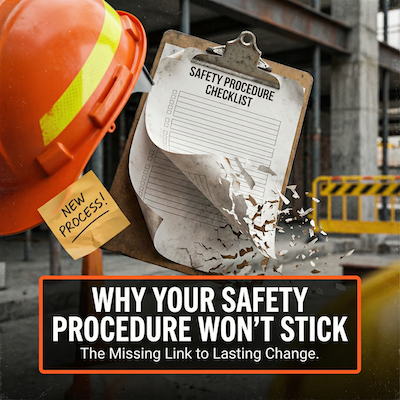Introduction
Culture is a multifaceted concept, especially when it comes to safety in construction companies. Consultants often earn significant fees helping these businesses define and enhance their safety culture. In this post, we will explore what safety culture is and provide practical tips for construction companies to improve their own practices. We believe that Scratchie is one of the most powerful tools for boosting a construction company's safety culture. So, let's dive right in!
Understanding Safety Culture
Safety culture refers to an organisation's values, beliefs, and attitudes that shape its approach to safety. A robust safety culture is essential for any organization aiming to minimize accidents and injuries.
The foundation of a strong safety culture is the tone set by top management and leaders in prioritising safety. It encompasses all aspects of an organisation's operations, from facility design to employee training. Trust and respect between employees and management are crucial in building a healthy safety culture.
A positive safety culture leads to a more efficient workplace, reduced accidents, and satisfied employees, benefiting everyone involved.
Improving Safety Culture:
A Step-by-Step Guide:To enhance your construction company's safety culture, consider the following five steps:
1. Assess your current safety culture:
Before implementing any changes, gain a baseline understanding of your existing safety culture. This allows you to set realistic goals and track progress over time. You can use employee surveys, stakeholder interviews, or focus groups to collect insights on safety perceptions, knowledge of procedures, and compliance with protocols.
At Scratchie, we've developed a baseline survey that workers can complete within minutes via SMS. This survey not only provides valuable information on your safety culture but also demonstrates to employees that their opinions matter.
2. Define your safety culture goals:
"Good" safety culture can mean different things to different companies. Generally, a healthy safety culture is proactive, engaged, and fosters open communication between management and employees. Look to companies with admirable safety cultures as examples and determine the factors that contribute to their success.
3. Utilise effective tools:
Once you've identified your safety culture goals, use tools to measure and track your progress. Scratchie, for instance, is a powerful tool that encourages safe work practices, captures data, and provides tangible evidence of management support.
4. Monitor progress:
Lead indicators help you monitor progress as you work to improve your safety culture. These indicators, such as safety audits and training completion rates, help you track changes over time and pinpoint areas needing improvement. Scratchie's lead indicator data integrates with Microsoft PowerBI, offering detailed insights down to the individual worker level.
5. Embed improvements into your culture:
Ensure that safety culture improvements are fully integrated into your organisation by creating systems and processes that support safety protocols. Embedding these changes can be challenging, but the resulting safer workplace makes it worthwhile.
Conclusion:
Top construction companies prioritize building and maintaining a robust safety culture. A systematic approach and ongoing effort are necessary for improvement. While worker attitudes are essential, tools focusing on attitude have been scarce—until Scratchie. This innovative tool impacts worker safety attitudes while providing valuable data to drive continuous enhancements in workplace safety culture.
If you represent a construction company with a turnover exceeding $100 million and wish to improve your safety culture, click here to arrange an introductory meeting with the Scratchie team.










.svg)
